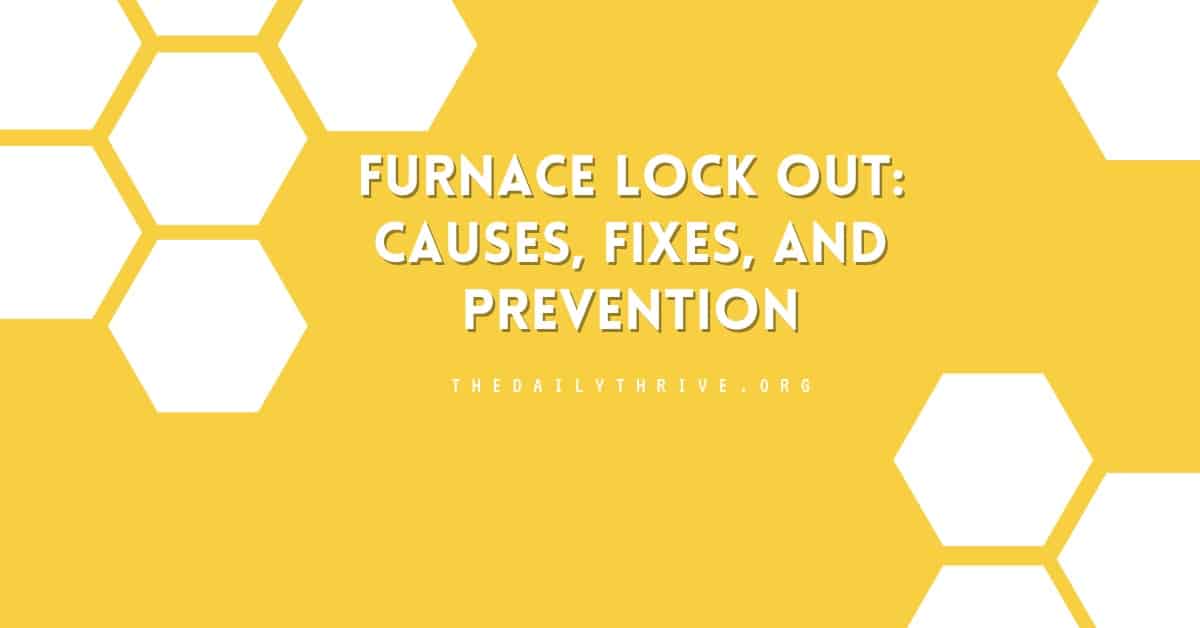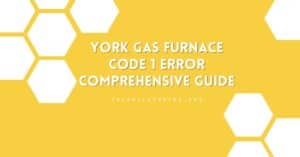When your home feels like it’s slowly turning into an icebox, the last thing you want to see is your furnace flashing a warning or, worse, indicating it’s in ‘Lock Out’ mode. Understanding what ‘Lock Out’ means on a furnace can be the difference between resolving a minor issue quickly and sitting in the cold waiting for professional help.
Let’s dive into the world of furnace operations to demystify this term and guide you on what steps to take if you ever find your furnace in this state.
Understanding Furnace ‘Lock Out’ Mode
‘Lock Out’ mode is a safety feature built into furnaces to prevent the unit from continuing to operate in unsafe conditions.
When a furnace enters ‘Lock Out’ mode, it has detected a problem that could be hazardous, such as a failure to ignite or a problem with the internal components like the fan or sensors. Instead of attempting to run and potentially causing damage or a safety hazard, the furnace will shut down and lock itself out of operation.
This mode is essentially the furnace’s way of saying, “Something’s wrong, and I’m not turning it back on until it’s fixed.” It’s an important feature that helps protect your home from potential dangers like gas leaks or electrical fires.
Common Causes for Furnace ‘Lock Out’
Several issues can trigger a furnace into ‘Lock Out’ mode. Here are a few of the most common:
- Failed Ignition Attempts: If the furnace tries and fails to ignite a certain number of times, it will stop trying to avoid gas buildup.
- Overheating: Furnaces have built-in switches that detect if the unit is getting too hot. Overheating can be caused by restricted airflow, a malfunctioning fan, or other issues.
- Sensor Failures: Modern furnaces rely on various sensors to operate safely. If a critical sensor fails or provides inaccurate readings, the furnace may lock out as a precaution.
- Electrical Issues: Problems with the furnace’s electrical system, including wiring faults or circuit problems, can lead to a ‘Lock Out’ condition.
What to Do If Your Furnace is in ‘Lock Out’ Mode
- Check the Thermostat: Sometimes, the issue can be as simple as incorrect settings or a malfunctioning thermostat. Ensure it’s set correctly for heating and that the batteries (if they are battery-operated) are fresh.
- Check the Furnace Filter: A dirty filter can restrict airflow, causing the furnace to overheat and enter ‘Lock Out’ mode. If it’s clogged or dirty, check it and replace it.
- Reset the Furnace: Often, you can exit ‘Lock Out’ mode by resetting the furnace. This can be done by turning off the furnace’s power at the breaker box, waiting a few minutes, and turning it back on. If the furnace resets and starts operating normally, keep an eye on it to ensure the issue doesn’t recur.
How to Reset Your Furnace?
Resetting your furnace is a crucial step to take when it enters lockout mode. Here’s a detailed guide on resetting your furnace and a pre-checklist to ensure a safe and effective reset process.
- Turn Off the Power: Start by switching off the power supply to your furnace. This can usually be done at the furnace switch or the main electrical panel.
- Wait: After turning off the power, wait approximately 20 seconds. This brief period allows the furnace’s internal systems to fully power down and reset.
- Power Back On: Switch the power back onto your furnace. This action can trigger the system to reset and exit lockout mode for most modern gas furnaces.
- Pilot Light: If your furnace uses a pilot light that has gone out, you may need to relight it. Follow the manufacturer’s instructions carefully to ensure this is done safely.
Before attempting to reset your furnace, there are several important considerations to ensure you’re addressing the problem correctly and safely:
- Identify the Cause: Understand what caused the furnace to enter lockout mode. This could be due to overheating, failed ignition attempts, or sensor malfunctions. Addressing the root cause is essential to prevent the furnace from locking out again.
- Ensure Safety: Confirm that the furnace is in lockout mode due to safety features and not another issue within the system. Mistaking a different problem for a lockout can lead to incorrect troubleshooting steps.
- Professional Evaluation: If the root cause of the lockout isn’t clear or the problem persists after attempting a reset, it’s time to call in a professional. An HVAC specialist has the skills and tools to safely diagnose and repair your furnace, ensuring it operates efficiently and safely.
Some furnace models are designed to automatically exit lockout mode after 1-2 hours and attempt to restart. If your model has this feature, giving it some time might resolve the issue without further intervention.
If the furnace doesn’t reset or you’re unsure about performing any steps, contacting an HVAC technician is the safest and most effective. They can diagnose the issue, perform necessary repairs, and safely reset your furnace.
Preventing ‘Lock Out’ Mode
The best way to deal with a ‘Lock Out’ is to prevent it from happening in the first place. Regular maintenance is key to keeping your furnace running smoothly and safely. This includes annual inspections and cleanings by a professional, replacing the air filter regularly, and ensuring that the area around the furnace is clean and unobstructed.
Additionally, paying attention to your furnace’s performance and promptly addressing any unusual sounds, smells, or behaviors can help catch issues before they lead to a ‘Lock Out.’
A furnace’s ‘Lock Out’ mode is a critical safety feature that protects your home and family from potential hazards. Understanding what causes a furnace to enter ‘Lock Out’ mode and how to respond can help you resolve issues quickly and maintain a warm, safe home. Regular maintenance is the best way to prevent furnace problems and ensure your heating system operates efficiently all winter. If in doubt, always consult a professional to ensure your furnace receives the care it needs.






